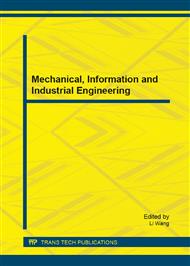p.929
p.933
p.939
p.943
p.947
p.952
p.957
p.961
p.966
The Application of Random Forest in Finance
Abstract:
The variation of futures price is affected by a lot of factors. It is a challenge to predict the price’s trend. In this paper, we apply random forest technique to predict the type of K-line in next day. First, we empirically select nine technical indexes as input variables or features. Then, these features and the associated class label, i.e. the type of K-line, are used to construct RF classifier. The experimental results demonstrate that RF is effective and can be used in the trend prediction of futures price.
Info:
Periodical:
Pages:
947-951
Citation:
Online since:
March 2015
Authors:
Keywords:
Price:
Сopyright:
© 2015 Trans Tech Publications Ltd. All Rights Reserved
Share:
Citation:


